Login (User Login; top right of page) with your web user or complete this form to download.
What is IoT vs IIoT?
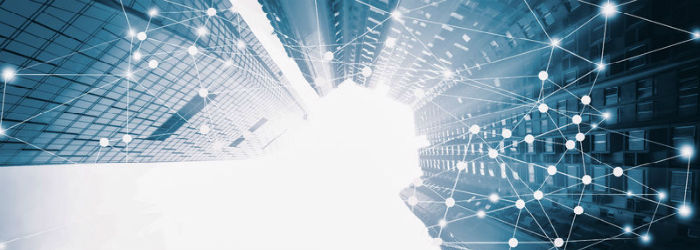
The Internet of Things, or IoT, and the Industrial Internet of Things, or IIoT, are two of the leading technologies in the digitization revolution. You've most likely heard these terms plenty of times and may even use some IoT and IIoT technologies. By connecting numerous devices and pieces of equipment through the Internet, IoT and IIoT can help businesses operate more efficiently, make more informed decisions and unlock new revenue sources. Let's take a closer look at how these technologies work and how your organization can leverage their capabilities using the zenon Software Platform.
What is IoT, and how does IoT work?
The IoT is a network of connected devices that can communicate with each other and provide data to users through the Internet. IoT devices can connect to the Internet and often have sensors that enable them to collect data. An IoT device can be useful on its own, but when you use numerous devices together, they become even more valuable.
As more types of equipment gain the ability to connect to the Internet, the IoT grows in size. The IoT includes a vast range of devices. Everything from factory machinery to electrical substations to buildings and infrastructure can be a part of it, with the number of connected devices growing every day. Manufacturers, energy companies, city governments and a variety of other types of organizations use the IoT.
IoT technology enables you to collect data automatically from a variety of functions, including, for example, how much energy the lighting in a building is using or how much water is flowing through a wastewater treatment plant. IoT solutions and devices can transmit the data they collected to a central system via the Internet. Managers can then use this data to inform their decisions. Using data analysis methods, you can drill down into the data to discover deeper insights and predict future outcomes.
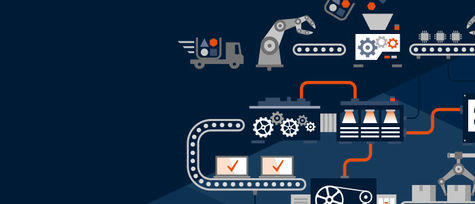
What is IoT and IIoT?
You can also use IoT technology to automate your equipment and parts of your operations. Equipment with smart sensors can automatically adjust its operation to optimize energy use, traffic flow and more. Smart sensors are sensors that take an action or signal for an action to happen when they detect a particular input. A simple example is motion-activated lights. Those sensors detect motion then turn on the lights. Smart sensors can also identify abnormal conditions or device operation and alert operators to potential problems.
What is IIoT, and how does IIoT work?
IIoT is a subcategory of IoT. The term refers to IoT technology used in industrial settings, namely in manufacturing facilities. IIoT is a key technology in Industry 4.0, the next phase of the industrial revolution. Industry 4.0 emphasizes smart technology, data, automation, interconnectivity, artificial intelligence and other technologies and capabilities. These technologies are revolutionizing the way factories and industrial organizations are run.
IIoT can have many of the same uses and benefits that IoT can. You can integrate smart sensors into manufacturing machinery, energy systems and infrastructure such as piping and wiring. These sensors, through the data they collect and the advanced functionality they enable, can help industrial businesses to boost their efficiency, productivity, employee safety and more.
IIoT enhances machine-to-machine communication and provides plant managers with data that gives them a clearer picture of how their facility is operating. Through the continual collection of granular data, industrial companies can keep closer tabs on the energy, water and other resources they're using, when their machinery is running and how much they're producing. Operators can then make manual adjustments, or equipment can automatically adjust to optimize their operation.
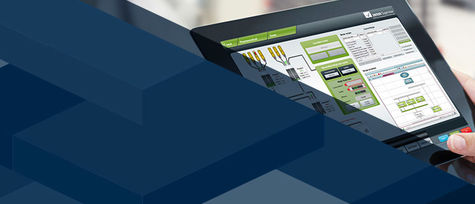
IIoT enhances machine-to-machine communication and provides plant managers with data that shows a clearer picture of how their facility is operating.
Through this continual optimization, companies can save significant amounts of energy, water and resources, while maintaining or increasing productivity levels. When used in this way, IIoT can help companies meet their lean manufacturing goals. You can also use IIoT to inform predictive maintenance programs, speed product development and achieve other business goals.
Differences between IIoT vs. IoT
As you differentiate between IoT and industrial IoT, it's essential to understand that IIoT is a subset of IoT technology that refers specifically to technologies used for industrial activities. It involves many of the same concepts and functions, but there are also some differences between IIoT and typical IoT applications.
Review some of the following differences between the IIoT and IoT below:
- Market focus: IoT encompasses a wide range of sectors and users. Consumers, as well as professionals in industries such as healthcare, enterprise and the public sector, may use IoT technology. Since IoT is used among so many different sectors and users, it tends to focus on more general applications. In contrast, IIoT technology is only used in industrial settings by professionals in an industrial field, meaning the market focus is smaller. Some of IIoT's main applications are in power plants, oil and gas refineries and manufacturing facilities.
- Goals: Users of IIoT and IoT technology tend to aim to accomplish slightly different goals. IoT deployment typically aims to increase efficiency, improve health and safety and create improved experiences. IIoT is typically concerned primarily with the first two goals and is less user-centric. General consumers do not use IIoT in their personal lives, and it is instead part of an industrial process.
- End devices: Since IIoT and IoT have different focuses and goals, they often utilize different devices. IIoT devices are designed to provide users data on their machinery, with these devices integrating with existing machinery rather than working independently. Examples of these devices include controllers and Programmable Logic Controllers. IoT devices are typically devices employed in everyday life that you can use independently, such as smart thermostats, smartwatches and smart assistants. You can sometimes find IoT smart sensors and other devices used to improve infrastructure.
- Risk of failure: When IoT devices and technology fail, the risk is relatively low since these devices are used on a small scale. Generally, IoT devices aren't used for essential processes that could be potentially life-threatening or dangerous if they fail. Contrasting IoT, IIoT devices and technology failure can be more dangerous, as IIoT technology is connected over a network and can create life-threatening situations when a piece of heavy machinery fails.
- Development needs: As companies produce new IoT devices, they usually aim to provide greater convenience to a user's everyday life. The focus of development is geared more toward increasing comfort, as consumer demand for ease of use is high. IIoT development typically focuses on producing new devices that can make clients' operations more efficient. Since industrial plants must optimize their processes to keep up with their industry, IIoT developers use data metrics to craft devices that help companies cut costs and increase their efficiency.
- Compatibility with legacy systems: Generally, IoT devices don't need to be compatible with legacy systems. Since these devices often work independently, device designers don't have to make them backward compatible. In contrast, IIoT devices tend to need to be compatible with various legacy devices and machines found in industrial plants. Since these plants often have equipment that doesn't have digital interfaces or functionality, many IIoT devices have to help legacy equipment provide digital data and accept IT system commands.
- Environmental requirements: IoT devices typically have to perform in everyday environments, with their design made to withstand normal temperatures and other environmental pressures. Since IIoT devices are used in harsher environments, such as energy plants, factories and oil refineries, they have to be more durable and reliable. As a result, IIoT device manufacturers typically design their devices to withstand humidity, radio interference and extreme temperatures to ensure they deliver consistent results.
How does IoT affect smart cities?
IoT is a key enabling technology of smart cities, which use advanced technologies to improve the quality of life for everyday people and increase the efficiency of operations. The IoT enables cities to collect data from a city’s infrastructure and use that information to optimize operations and inform decisions. This technology can drive innovation in numerous areas, including:
- Infrastructure: Smart cities can integrate sensors into their infrastructure to improve maintenance programs, boost efficiency, enable remote operation and gain other benefits. This infrastructure includes everything from street lights and water networks to roadways and transportation systems. By installing timers and motion sensors in streetlights, for example, smart cities could program them to come on when it gets dark or when someone is nearby.
- Buildings: IoT can also help cities to improve the efficiency and operation of publicly owned buildings. Cities can use smart technology to collect data from and remotely operate a wide range of systems within buildings, including lighting, heating, air conditioning and elevators.
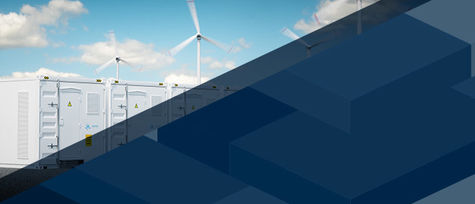
IoT can help utilities to improve the reliability, efficiency and sustainability of electric power systems.
- Energy supply: The IoT can help to improve the reliability, efficiency and sustainability of electric power systems. It can play a role in nearly every aspect of the electric grid including substations, renewable energy power plants, energy storage facilities and more. It can help operators to detect equipment problems early, manage variable generation resources and optimize distribution.
- Water: Having a water system that reliably provides residents with clean water and safely handles waste water is crucial. With an IoT system in place, operators can more quickly detect leaks to reduce waste and avoid future service interruption that may occur if a damaged pipeline is not fixed. Smart technology can also enable you to predict water depletion rates and better plan for the future.
- Transportation and traffic: IoT technology can also enhance public transportation and traffic systems. It can help to reduce energy use in public transportation systems and enable operators to remotely control overhead displays on roadways or lighting on airport runways. With this information, operators can quickly react to road incidents or other emergencies.
How does IIoT affect smart factories?
Driving Digital Transformation for Smart Factories & Smart Cities
IIoT technology is a foundational element of the transition to Industry 4.0. Smart factories can integrate IIoT technology into a vast array of equipment and leverage it to improve efficiency, worker safety and productivity.
Some of the top ways factories use IIoT technology include:
- Smart production: Integrating smart technology into manufacturing machines and systems enables them to communicate with each other, creating a connected factory. All of the data collected from this connected equipment can go into a central database where employees can access it. Having the data in one place gives managers a comprehensive view of the facility. They can see when specific pieces of machinery were in operation as well as details about their performance. They can also gain insights into the amounts of resources used, the number of units produced and more.
- Energy management: Industrial processes often use substantial amounts of energy, so even small improvements in energy management can help industrial companies save significant amounts of money and improve their environmental performance. With IIoT solutions, managers can improve their understanding of the energy use of an entire company and facility. They can also view details about the energy consumption of individual machines. Using data from smart sensors, companies can optimize their energy use. They can determine where they're using the most energy and identify inefficient machines. It can even assist with adding renewable energy resources to a facility.
- Predictive maintenance: IIoT technology can help industrial organizations improve their efficiency by enhancing their predictive maintenance programs. Predictive maintenance involves monitoring the condition and performance of equipment to predict when it might fail. Workers can then prevent these failures by performing maintenance. This sort of maintenance differs from reactive maintenance, in which workers fix a machine after a problem occurs. Smart sensors can provide detailed information about how a piece of machinery is functioning, allowing workers to predict failures earlier and more accurately. Workers may even receive alerts about unusual operations and potential problems. This IoT-enabled predictive maintenance helps companies to reduce downtime and increase efficiency.
What are the benefits of IoT and IIoT?
IoT and IIoT technology can provide numerous benefits to manufacturers, cities and other users. These benefits include:
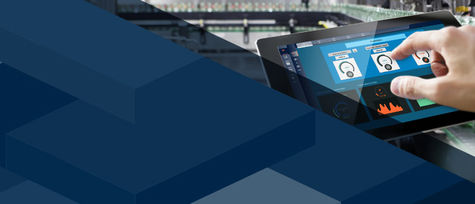
By enabling predictive maintenance and alerting workers to problems early, you can reduce the downtime of your facilities and equipment.
- Improved efficiency: IoT devices can continuously gather data about the equipment, processes and resources a machine, system, building or city is using. These resources include electricity, natural gas, water and other industrial process inputs. Improving your understanding of how you use resources and manage your processes can help you find ways to reduce your consumption and improve productivity. This enhanced efficiency can reduce your costs and improve your organization's overall performance.
- Reduced downtime: By enabling predictive maintenance and alerting workers to problems early, you can reduce the downtime of your facilities and equipment. This can help companies avoid significant amounts of lost revenue and ensure reliable access to water, electricity and other resources for cities. An IoT-enabled predictive maintenance program can also help you to reduce your overall maintenance costs as well by preventing more severe equipment damage from occurring.
- Remote control: When your equipment is connected to the Internet, you can control it from anywhere you have an Internet connection and the necessary software. You can control equipment manually, have it operate according to a schedule or set it to automatically adjust its operation based on changing conditions. The ability to remotely control equipment increases your ability to adapt to changing conditions.
- Increased security: Controlling machinery or infrastructure remotely has some real risks, but overall, connecting your infrastructure to the Internet can provide increased protection. Choosing devices and software with comprehensive, integrated security features protects your organization against unauthorized access and data loss. With heavy encryption, secure authentication and administrative options tailored to your needs, you can reduce risk and manage your data and equipment better.
- Smarter decision making: Smart sensors help you increase the volume of the data you collect as well as the level of detail in your data. This information may be useful on its own, and you can also use big data analytics to derive deeper insights from your data.By using this data and the insights you obtain, you can make more informed, and therefore better, decisions. Your data can also help you to predict future outcomes better and prepare for those changes.
- Increased ROI: IoT and IIoT can improve your organization's bottom line and the return on investment (ROI). It can help you reduce your costs through various means, including energy efficiency improvements and predictive maintenance. The ability to make better decisions and predict future outcomes can help your business stay ahead of the competition and minimize risks. It may also open up new business opportunities and create new revenue streams.
The future of IoT and IIoT
Over the coming years, the adoption of IoT and IIoT technologies will continue to grow. It is expected that the world will have 30.9 billion connected devices by 2025. Globally, the IIoT market is expected to grow to USD 1.1 trillion by 2028.
These technologies are already impacting a wide range of sectors, from consumer goods to manufacturing to healthcare. They will continue to drive digital transformation and significantly alter nearly every sector along with other Industry 4.0 technologies. When used in combination with automation, data analytics, artificial intelligence and other advanced technologies, IoT and IIoT have the potential to be even more impactful.
Currently, IoT and IIoT can help give companies an edge over the competition. Increasingly, companies need to use these technologies to avoid falling behind their competitors, and their importance for businesses will continue to grow over the coming years. These technologies will also become increasingly common in consumers' daily lives. As the future continues to become connected, smart and digitized, IoT and IIoT play a growing role in our professional and personal lives.
zenon's IoT and IIoT solutions
To take full advantage of the capabilities of IoT and IIoT technology, you need a powerful platform that can help you to manage your connected devices and the data they collect. zenon from COPA-DATA offers an integrated environment that incorporates machine operation, data recording and business intelligence. zenon includes SCADA, HMI, IoT, IIoT, soft PLC systems and Dynamic Production Reporting, all in one platform. Trusted by more than 5,000 customers and over 250 partners worldwide, zenon can enable smart cities, factories and systems for organizations across a variety of sectors.
zenon offers easy integration with existing systems and easy-to-use wizards and tools. You can quickly configure projects, automate routine commands and create custom views, events and alarms. zenon's advanced analytics, reporting and visualization help you derive value from your data, and you can quickly and securely access your information and control your system from anywhere. To learn more about how COPA-DATA can help yur organization create a smart factory, building or city and improve its efficiency, productivity, reliability and ROI, contact us today.














































